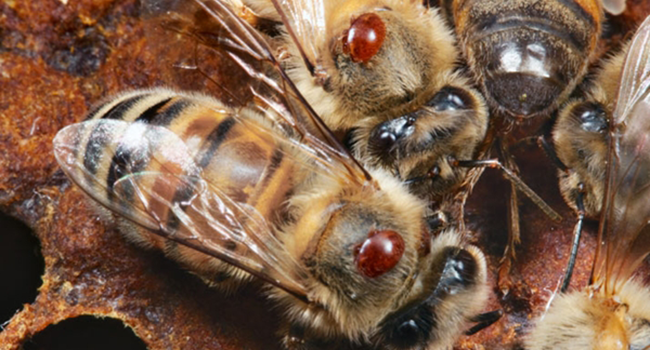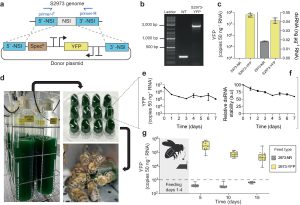The iGEM “Tec-Chihuahua” Team
Honey. Floral and sweet honey. Fresh as fruits or aged as wine.
Just like bees, beekeepers want to give the world a taste of this honey. Honey that depends not only on chemical processes or industrial protocols but also its essence. The goal is that its color, smell and consistency can be appreciated and accessible for everyone.
Despite the effort that beekeepers do to obtain the best product, is known that they are exposed to several microorganisms that could affect the honey´s quality. Thanks to new scientific technologies, it exists the possibility to overcome these pathological microorganisms without making the environment go out of control called synthetic biology.
Firstly, what is synthetic biology? This newly emerging field of genetic engineering gives living organisms new functions for them to obtain positive qualities.
As bee diseases roam wild and flowering rates lessen, treatment and care costs limit the growth of beekeeping companies. These companies strive to become profitable, that’s why beekeeping needs the help of scientific and technological advances to truly achieve its potential. Chief among these advances is synthetic biology.
For example, master’s students from Pierre and Marie Curie University designed a detection system for several pathogens in order to determine beehive´s health. These parameters can identify the bee pathogen Paenibacillus larvae, which is responsible for one of the most terrible diseases of beekeeping: American foulbrood. For this, they modified the genetic material of the bacterium Bacillus subtilis to express a pigment (not present under normal conditions) every time P. larvae is present, thus indicating the presence of this disease.
One of the biggest mysteries in beekeeping is the Colony Collapse Disorder (CCD), a phenomenon characterized by the rapid loss of adult bees that never return to the beehive. Students at the Missouri University of Science and Technology suggest that bacteria could be genetically modified to produce fumagillin, an antifungal agent commonly used to kill Nosema ceranae. They discovered that this would be a viable solution for beekeepers, instead of constantly applying antibiotics to the beehives.
The CCD is of great importance at a global level since it is related to large economic losses and a decrease in the number of beehives of 30% per year (vanEngelsdorp et.al Hayes Jr, M. Underwood, and Pettis, 2008). The true cause of the CCD is uncertain, this because it is an infectious synergy of multiple factors.
One of the principal causes are nutritional complications. Due to the climate change, sometimes there are not enough flowers or pollen for their proper nutrition. It is understood that Varroa mites can cause the collapse of honey bee colonies as it states below.
Varroa mite infestation reduces the expression of genes encoding proteins related to bee immunity, which eventually leads to a low cellular and humoral immune response. Therefore, bee colonies can become more susceptible to various diseases such as Nosemosis, European Foulbrood, and American Foulbrood.
The iGEM “Tec-Chihuahua” team, a group of 13 young entrepreneurs of the career of Biotechnology Engineering in Mexico, is currently developing a product using synthetic biology in order to produce these proteins able to kill and inhibit bacteria. This alternative method is posed to eliminate American and European Foulbrood from the beehives by giving more defenses to bee larvae, without altering the natural genomic of the bee or causing any negative effect on them or their products.
Scientists strongly believe the diffusion of this new science branch can improve life qualities and lead the world to a new technological era, that’s why for the scientific community is a priority to spread knowledge to beekeepers or people related in this business. We want to show and let people know that science is not only creating new technological advances for healthcare or for proper interests, but also to agriculture, beekeeping and the environment.
The scientific community wants to create responsible and informed citizens, who can make and defend their point of view having great information. We are concerned about the future of beekeeping, and the best we can do is try to solve problems affecting this sector using something we are passionate about, synthetic biology.
Bees on the Food and Development Research Center (for its acronym in Spanish “CIAD”) in Cuauhtémoc, Chihuahua, Mexico.
References
Team:UPMC-Paris/Project/overview – 2016.igem.org. (2018). 2016.igem.org. Retrieved 26 July 2018, from http://2016.igem.org/Team:UPMC-Paris/Project/overview
vanEngelsdorp, D., Hayes, J., Underwood, R., & Pettis, J. (2008). A Survey of Honey Bee Colony Losses in the U.S., Fall 2007 to Spring 2008. Plos ONE, 3(12), e4071. doi:10.1371/journal.pone.0004071
Cornman, R., Tarpy, D., Chen, Y., Jeffreys, L., Lopez, D., & Pettis, J. et al. (2012). Pathogen Webs in Collapsing Honey Bee Colonies. Plos ONE, 7(8), e43562. doi:10.1371/journal.pone.0043562







